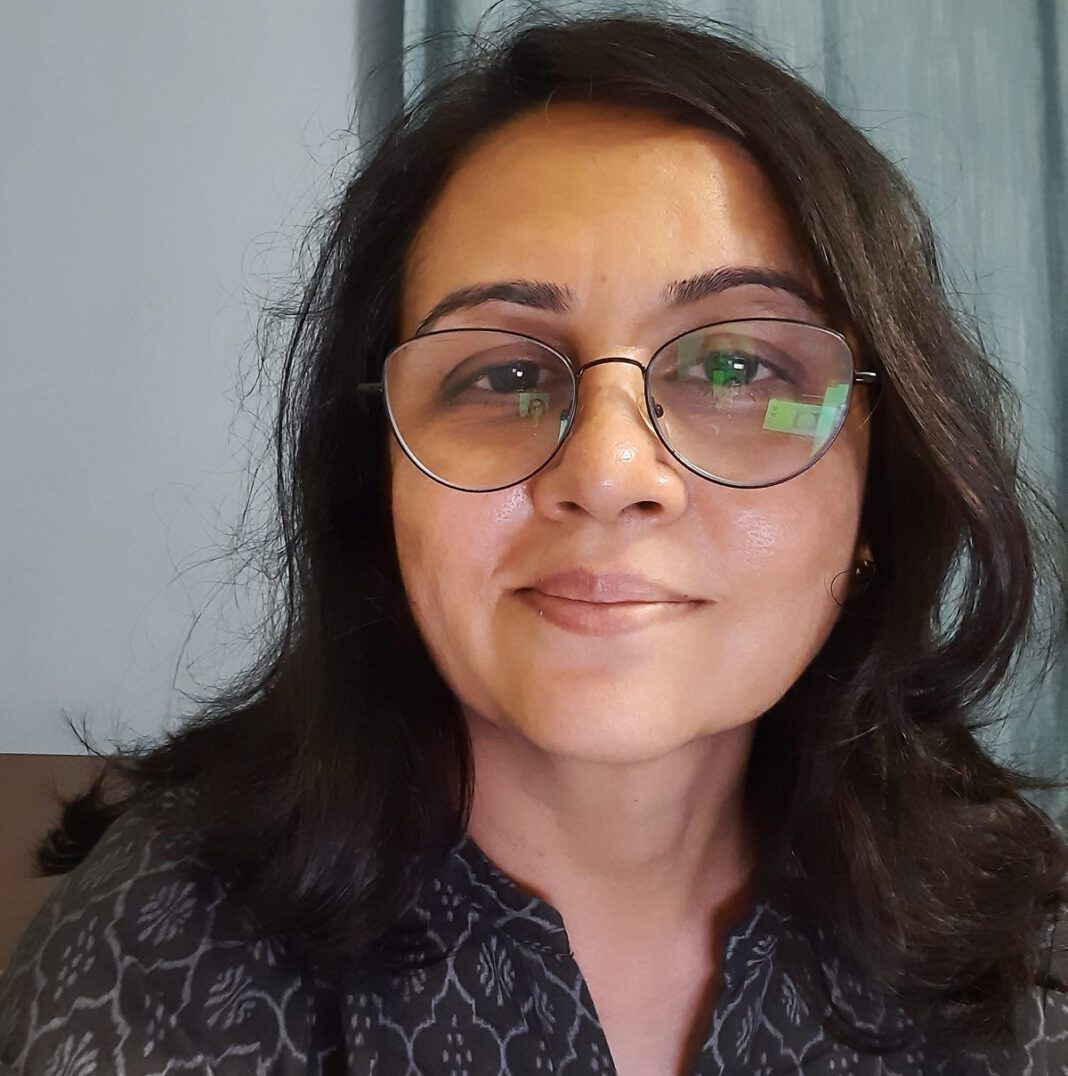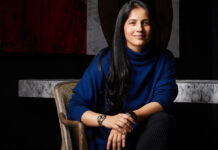What inspired you to pursue a career in architecture and drove you to transition from being a student to becoming an educator and entrepreneur in this field?
This was 30 years ago; my father wished to see me as an architect. He knew I was creative and wanted me to pursue IAS to take up administrative positions in the cities. This did not pique my interest but led me to pursue a master’s degree in urban design, which felt like a progressive transition after becoming an architect.
As someone who did not get proper guidance while completing her degree, I wanted to change this narrative for the upcoming generations. This passion and the fact that I hail from a family of educators was enough for me to go the extra mile and become an educator. The excitement of interacting with students and learning continuously motivated me to pursue teaching full-time, which turned out to be unsatisfying without engaging in practical work.
During the initial years of my career, I worked with Architect Planner Mr Bimal Patel and was amongst the very first urban designers to be employed at HCP DPM. Years later, I started a practice of my own. One thing that I swear by to stay relevant in this industry is to keep up with the ever-evolving trends and continue practising this art, as it is fulfilling to see your structures come alive.
How does it feel to lead the very department where you once studied, and how has your perspective changed from being a student to now being an educator and leader?
Honestly, I feel immense pride and fulfilment in heading the program of Masters in Urban Design at CEPT, which is one of the most sought-after courses in the country. From a student to becoming a practitioner and program chair, I have brought about significant changes and will continue to do so to make the program more advanced.
Currently, as an educator, I strive to be a teacher who is a mentor as well. I guide my students with empathy and encouragement, helping them realise their potential rather than concentrating on their shortcomings.
As an urban designer practitioner, how have the briefs evolved over time in order to design in Indian cities?
In our country, urban design is still new as a profession but it’s growing steadily. Urban design focuses on creating experiential environments for the end users – the people. Often, local bodies are not aware of what urban design is, or what the designers do, they confuse it with either architecture or urban planning. We are known for writing our own briefs and emphasising on people-centric designs for public spaces. Places such as streets, riverfronts, parks, and privately owned public spaces are meant to be enjoyed by the people and shared amongst their community.
One example that comes to my mind is the Sabarmati Riverfront in Ahmedabad, designed by Architect Bimal Patel; which is now a popular icon for the city of Ahmedabad. The people frequent it at all hours and take pride in showing it to their guests. This project solely signifies how urban designers create briefs that are centred around the public to prioritise their enjoyment, thus turning these places into iconic features of the city.
In semi-urban areas, a similar approach is employed to create environments that are for the people to experience and enjoy. Over time, briefs do evolve keeping the public in focus, to ensure that the new projects have a strong connection with the community.
As an architect in a country experiencing significant infrastructural growth, what methods would you suggest to ensure that these developments are sustainable?
Social infrastructure is increasing in our country but the key idea of making the people the epicentre of the projects, to make the cities more livable, still needs to be added. I research cities that are child-friendly, as they are the end users of those urban spaces. We, as a firm, indulge in creating champions for our projects, people who would make their community understand the benefits of that particular project.
What are the challenges that you have faced over the course of your career?
I have observed some major challenges, and one of them is educating the client about other raw materials. Steel, for that matter, is wrongfully viewed as a material that is solely used for temporary structures. It has a higher cost but also has multiple advantages. It is versatile, and durable and helps reduce the time of construction. Another major challenge urban designers face is to explain how we help improve the aesthetic of a city, as local bodies often confuse our work with that of structural engineers as well.
As a female practitioner in this industry, one thing that has been hard to tackle is the fact that people cannot digest that a woman has a higher authoritative role. Despite being qualified, and having years of experience there is always a noticeable resistance on the client’s face when they see that a woman would be handling the project.
How did those challenges help you bring about a better version of yourself as an architect?
Despite facing the challenges, we must keep learning, experimenting, and practising to stay relevant. I believe another factor that helps one stay afloat in this industry is to strike a balance between standardisation and innovation. Balancing the two helps maintain consistency and add innovative elements to the project as well.
We work on housing projects, and generally, prototypical plans are employed during the process. The key change that makes our practice different from others is that we opt to depart from these layouts and create something innovative that is also beneficial for our clients.
What are some of your favourite projects that you have worked on so far, with steel or otherwise?
One of our recent projects was a corporate office building in Ahmedabad with a unique prominent steel facade on the northern side of the building. We have also incorporated a courtyard with a retractable steel roof, which converts the courtyard into an impressive open space. The success of this innovative feature was almost like a winning moment for our team, which proved that unique structures are achievable in Ahmedabad.
We use steel extensively for various applications. One such example is that of tactile elements for specially-abled individuals in public spaces. The traditional yellow tactile tiles usually fit poorly with the standard paving materials which poses a challenge. Steel tactile elements can directly be fixed onto the floors, ensuring a seamless and homogeneous surface while guiding those who are visually impaired. These elements include three textures – stripes, knots, and specific patterns which enhance navigation.
Over your career, what significant changes have you witnessed in the industry? Can you share any emerging trends related to steel that you’ve incorporated into your projects?
Steel is a versatile material, it’s flexible, easy to clean, and can withstand harsh weather conditions. The Indian construction industry has not entirely embraced steel, as it’s still in the discovery phase, requiring more tests and trials to uncover its full potential. Steel is often perceived as an unsustainable material, and associated with glass facades at times. The initial cost of this material is high, but in totality, the incorporation of steel offers numerous advantages, including innovation and sustainability, and provides long-term benefits. As its versatility is still being explored, it will surely become integral to construction.
Having been part of this industry for the past two decades, what technologies or methods do you foresee being adopted in the future?
Our industry is transitioning and adopting AI and advanced software technologies rapidly. These advancements are beneficial for designers and enable them to present their project visions to their clients swiftly while making them easier to understand. AI-powered virtual testing of columns, reinforcements, and other structural materials, would reduce the risk of failure and also act as a cost-effective alternative to physical trial and error, thus, making the project sustainable as well. It would also help in understanding the accurate requirement of steel, and where it is needed for structural integrity.
Few of our contemporaries today are wary of these advancements, but embracing these changes can be advantageous. The future of this industry can be changed by adopting these technologies to improve the design, planning, and execution processes, ultimately leading to a better-built environment and innovative architectural solutions.
As a person with a timeline of iconic projects and experience of over 25 years, what helps you guide the architects and urban designers of tomorrow?
Guiding the young minds of tomorrow requires me to stay updated and keep learning as well. Embracing new technologies and methodologies from sites, projects, and innovations brought forward by students helps with staying updated. As an educator, it is important to go beyond theoretical knowledge and provide practical, real-world simulation, especially in a post-professional program that I teach.
I try and prepare my students to face the challenges of the industry and overcome them by integrating practical approaches for the same into the curriculum. This helps them navigate situations where they must present their projects to clients, or handle unforeseen challenges effectively.





